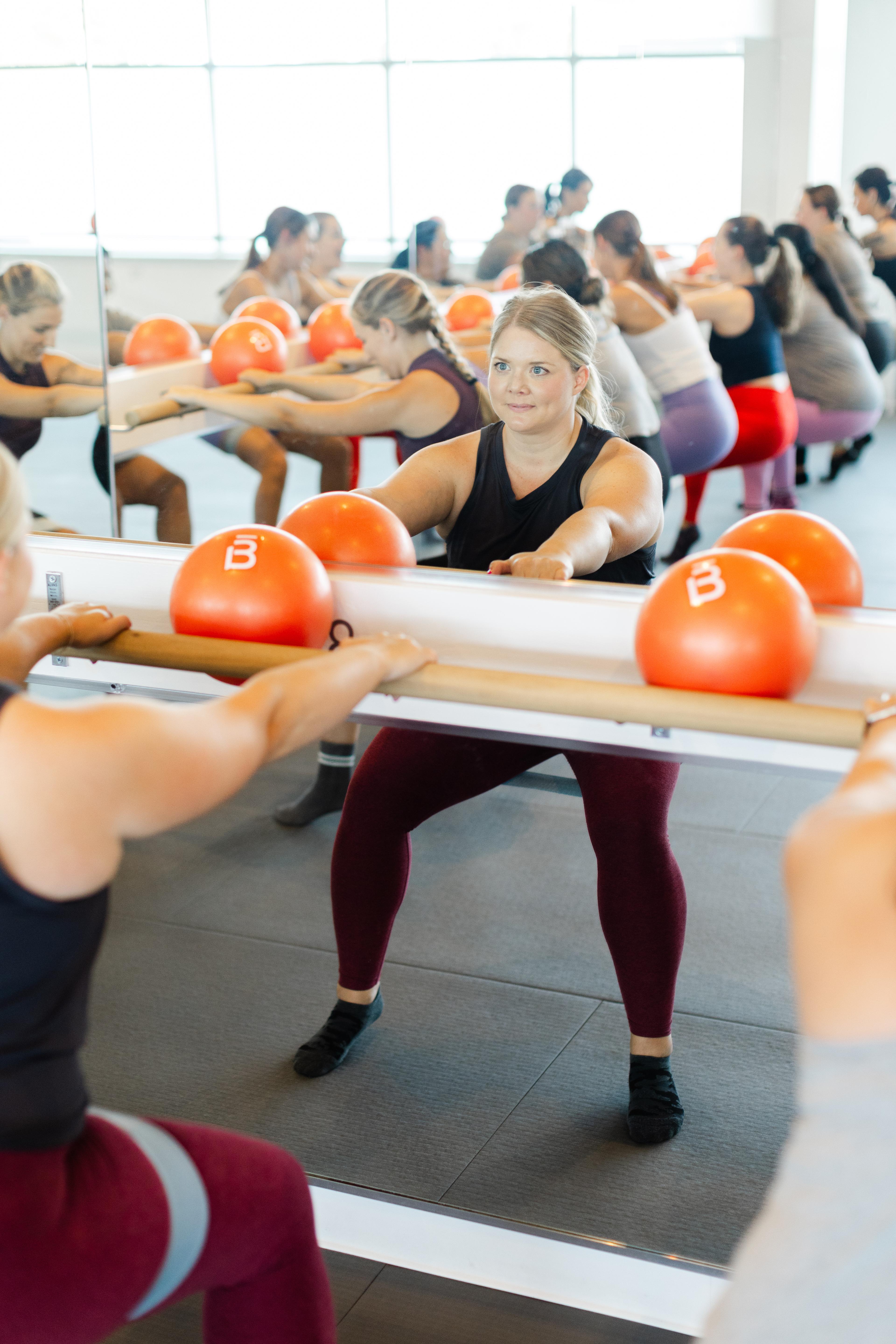Find Your Fit: Barre Fitness Keeps Your Joints ‘Nice and Happy’ With Low-Impact Strength Training
Jake Newby
| 5 min read

So many studio fitness classes are built around cardiovascular exercise. WERQ, Zumba and Bounce will have you huffing and puffing as you strengthen your heart and improve lung function, which are both integral to great physical health. But strength training is equally important, and that’s what Barre fitness provides.
Barre is low-impact strength training that people of all age groups and fitness levels can try. Strength training helps increase flexibility and improves functional strength, and it becomes increasingly important as we age. It’s a type of exercise that can reduce signs and symptoms of chronic conditions like arthritis, heart disease, depression, back pain and more.

Barre blends ballet-inspired movements, Pilates, yoga and weight work, typically with weights of between 1 and 5 pounds. Barre classes incorporate the Time Under Tension (TUT) concept, which refers to the amount of time a certain muscle is under tension during an exercise.
“With Barre, we work lower weight ranges with higher repetitions to build muscular endurance,” said Michelle Gimbutis, fitness trainer and gym owner of Barre 3 locations in Ann Arbor and Lansing. “So, instead of lifting as much as you can for 4 to 6 reps, we’re going to lift a lighter weight but hold the exercise a lot longer to build time under tension.”
What are the basic movements of Barre?
You won’t be jumping around much during a Barre class, which ranges anywhere from 45 minutes to an hour.
“It’s low impact throughout, to keep your joints nice and happy,” Gimbutis said. “We work through a combination of small range and large range motions to build strength, stability and endurance. We also focus on mobility, as well.”
After starting with a functional warmup to decrease your risk of injury during the class, participants begin targeting a particular muscle group.
“We’ll start with leg work,” she added. “So, let’s say we’re in a lunge or a squat, we would do small range of motion, so like pulses, or a common Barre term is “up an inch, down an inch,” where you hold that lunge for a minute or two, and then we flesh everything out with a full range lunge or squat. Then we go back to small range.”

What body parts does Barre target?
Every major muscle group is worked during a Barre class, from the upper body to the core to the lower body. When you head home after a class, Gimbutis predicts you’ll feel it most in your legs.
“You’ll feel the most sensation, I would say, in your lower body,” she said. “Barre specifically works a lot of stabilizer muscles, like outer hips. Body parts we don’t necessarily focus on in a lot of different forms of exercise. I’ll hear people say, ‘whoa what is that muscle, where is that soreness coming from?’ But those muscles are so important to strengthen for our everyday lives.”
What to know when trying Barre at home
You can accomplish a lot with a light set of dumbbells and a resistance band.
“Those two things will get you really far,” Gimbutis said with a laugh. “At Barre 3 we have a really robust online platform with workouts and classes, but people can go on YouTube too and try a bunch of things.”
She added that applying the TUT mindset to workouts you may already do at home is a great way to capture the spirit of Barre from your living room or basement.
“In terms of Barre types of work, take an exercise like a lunge or bicep curl or a squat or a plank and just do more reps than you might do typically but with a lower weight option,” she said. “That’s how you make it Barre style.”
Modification tips and important advice for beginners
One of the most appealing elements to Barre is its low-impact, customizable nature. Modifications can be made to every movement taught in a Barre class. It’s part of its inclusive culture.
“We want people to feel energized and not frustrated or depleted,” she added.
She used pushups as an example of an easily modifiable exercise. In a Barre class, you’re encouraged to try them on a ballet bar, which are usually built into studio fitness walls. If you’re at home, you can do pushups on a countertop or tabletop.

“It’s still a pushup on your toes, it’s just elevated,” Gimbutis said. “So, that’s still a way to train the same muscle groups in a way that helps people feel more successful. And then over time they can work their way down to the floor.”
Another common modification is to shorten the distance you raise your dumbbells during an upper body workout.
“We’ll always tell people, ‘Hey, if overhead adds tension to your neck and your shoulders, only come up about 90 degrees instead of extending all the way overhead.”
Bonding through Barre
The studio environment and communal nature drew Gimbutis into Barre classes years ago. They helped her ramp up her physical activity after becoming a new mom. The motivation from classmates kept her coming back.
“I was a new mom looking for something to get back into exercise that would help me reconnect to other people and even reconnect with myself, coming out of that postpartum phase,” she recalled.
Gimbutis said she sees little moments of connection manifest every day. Sometimes they’re as subtle as classmates locking eyes in the mirror during a challenging movement.
“We’re at a point in time where loneliness is an epidemic and people are craving connections. Just being in that setting where you have like-minded people next to you, who I guarantee are looking for people to connect with, can be really uplifting. Everything about it, you’ll feel more motivated during the workout, but you’ll also probably a find a little piece of connection that’ll keep you coming back.”
Talk to your doctor about trying Barre if you have health conditions or past injuries.
The Find Your Fit series launched to introduce people of all ages to workouts that may not be on their radar. It's about helping people explore fun and new ways to find a workout they can consistently perform and enjoy.
Photo credit: Michelle Gimbutis
More from the Find Your Fit series:





